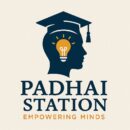📚 Unlocking Learning: Exploring Effective Teaching Methods
In today’s ever-evolving educational landscape, the way we teach is just as important as what we teach. The right teaching method can spark curiosity, build confidence, and create a lasting impact on a student’s academic journey. But with diverse learners in every classroom, no single method fits all. That’s why great educators use a blend of strategies to reach every student effectively.
🎓 What Are Teaching Methods?
Teaching methods are the techniques and strategies teachers use to deliver content, engage students, and achieve learning goals. These methods range from traditional lectures to modern, student-centered approaches. The aim is to make learning meaningful, memorable, and accessible to all types of learners—whether visual, auditory, kinesthetic, or a mix.
🧠 Popular Teaching Methods
Here are some widely used and effective teaching methods in classrooms today:
- Direct Instruction: Clear, structured lessons where teachers present information step-by-step—great for foundational subjects like math or grammar.
- Discussion-Based Learning: Encourages students to share thoughts, ask questions, and engage in critical thinking—ideal for subjects like literature and social studies.
- Hands-On/Experiential Learning: Learning by doing, through experiments, projects, or real-world tasks. This method helps students connect theory with practice.
- Inquiry-Based Learning: Students explore topics by asking questions, conducting research, and presenting findings—perfect for science and problem-solving.
- Flipped Classroom: Students review lesson content at home (videos, readings) and do interactive work in class. This approach maximizes class time for deeper learning.
- Game-Based Learning: Integrates educational games and challenges to make learning fun and competitive, increasing motivation and participation.
🎯 Why Variety Matters
No two students learn the same way. Some absorb information through visuals and examples, while others need movement, discussion, or repetition. Using a variety of teaching methods not only caters to these differences but also keeps lessons fresh and engaging. It fosters critical thinking, creativity, and collaboration—skills students need beyond the classroom.
🛠️ Adapting to Today’s Learners
With the rise of technology and digital tools, teachers now have more resources than ever to personalize instruction. Online quizzes, interactive whiteboards, and educational apps are just some tools enhancing traditional teaching methods. But at the heart of it all remains the teacher’s ability to connect, inspire, and adapt.
💬 Final Thoughts
Teaching is both an art and a science. While content matters, how that content is delivered can make all the difference. By embracing a mix of teaching methods and staying responsive to students’ needs, educators can create classrooms where every child has the opportunity to thrive

